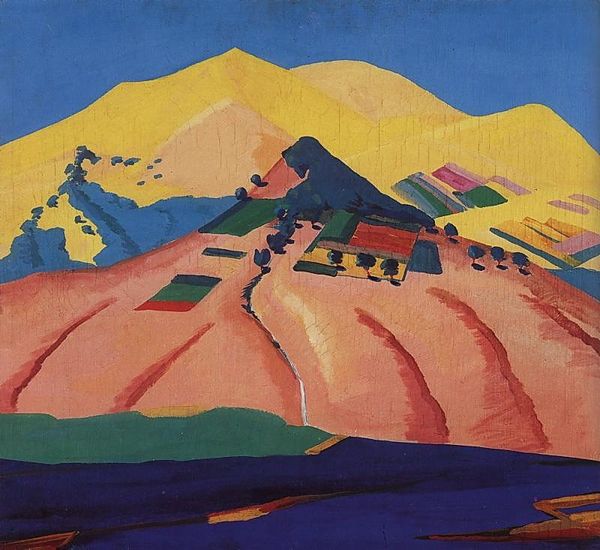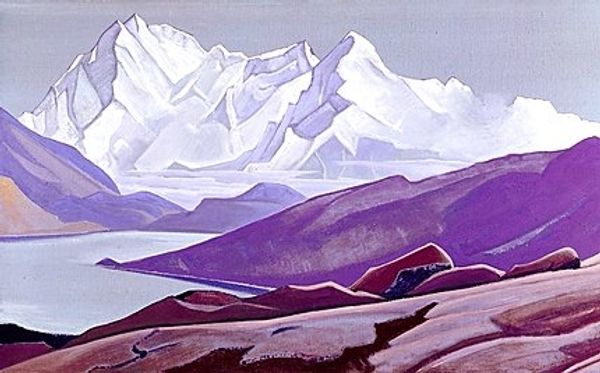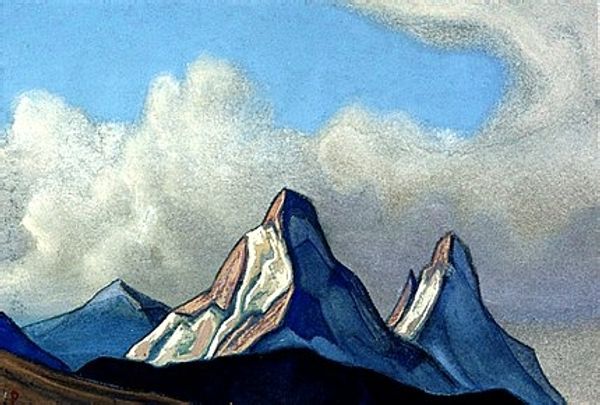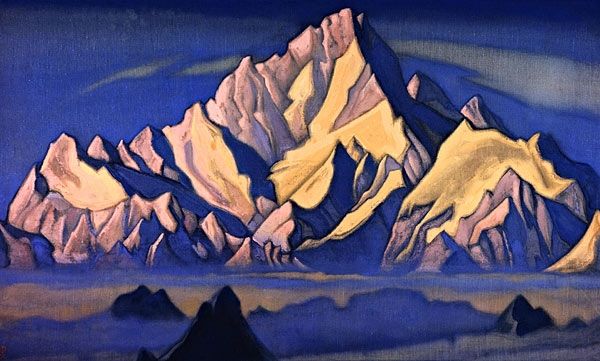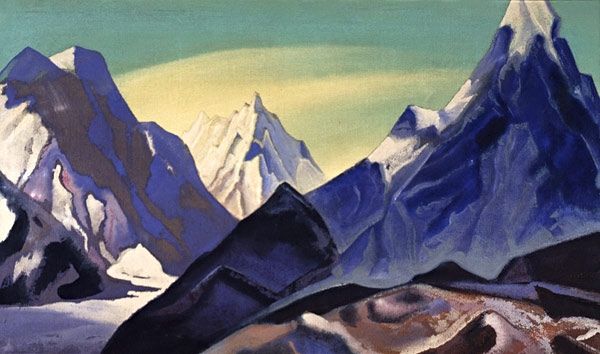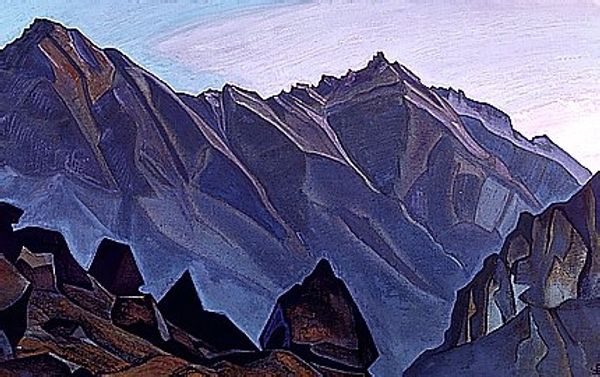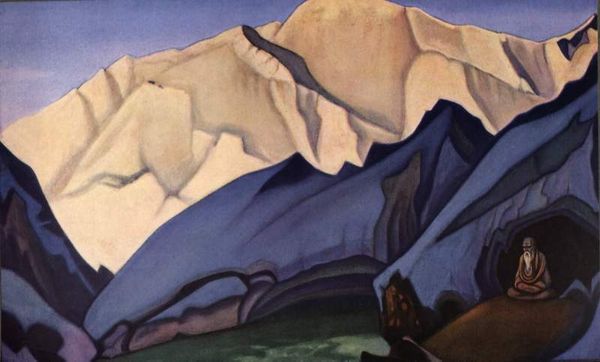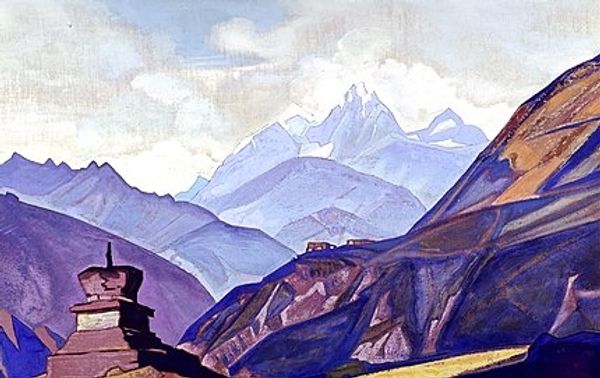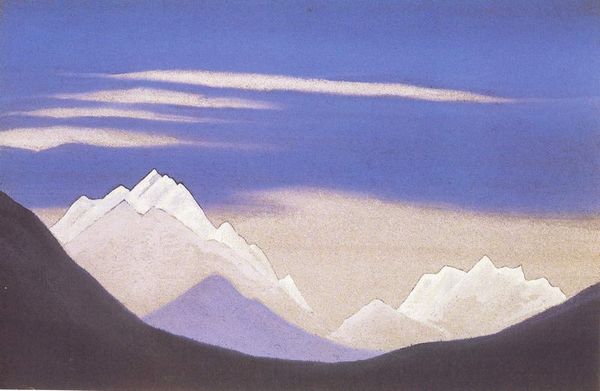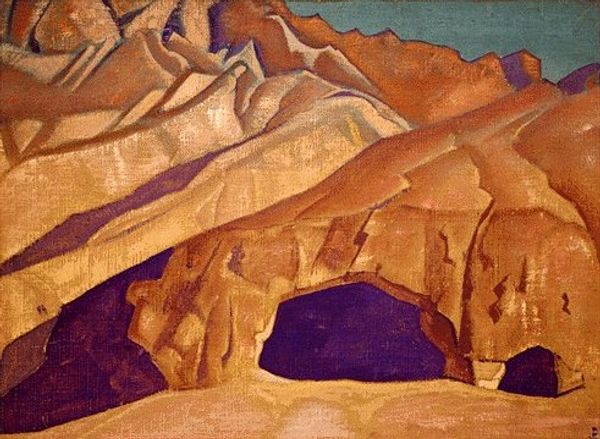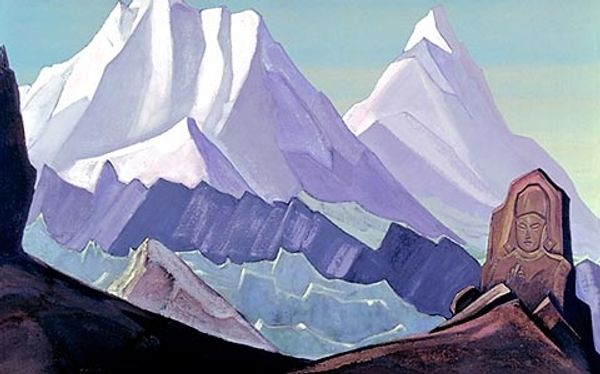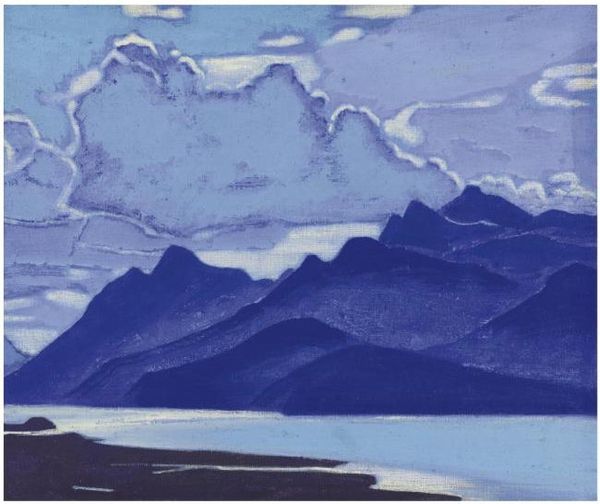
Copyright: Public domain
Curator: Let's delve into Nicholas Roerich's 1936 painting, "Hunting." The work, rendered in oil paint, is currently held at the Latvian National Museum of Art in Riga. Editor: My first impression is the sharp geometry against a sort of dreamlike vastness. The mountains are almost sculptural, sharply defined, but the colors are muted and almost ethereal. Curator: Roerich's body of work often explores themes of spiritual journeys, and he imbues landscapes with symbolism relating to human striving. This piece needs to be viewed within the context of his theosophical beliefs and his engagement with Eastern philosophies. We also should explore his own expeditions to Central Asia when assessing this image. Editor: Yes, there’s definitely a flattening of perspective, a choice not to replicate a true horizon. It brings the mountains and those tiny, frenzied figures in the foreground—hunters, I presume—almost into the same plane. And the color palette: a harmonious blend, but with a subtle disconnect from nature’s typical rendering. What statement does this unique artistic language want to convey? Curator: He isn't necessarily attempting to depict reality literally. It feels more allegorical. The hunting scene below plays against this awe-inspiring range that invites comparison with narratives around humanity's relationship with nature and the universe, themes very prevalent in his wider oeuvre. Editor: Look at how the light catches certain edges, the deliberate angularity of each peak, and the calculated way the sky meets the mountains—such careful structuring of shapes and values! It projects more of a human construction. The landscape feels built, rather than found. Curator: Right, and that intersects with orientalist sentiments—projecting specific ideas about culture and civilization onto the physical space through the painting itself. This act isn't just about what is present, but what ideological values are reflected within it. Editor: Considering the relationship between these artistic structures and historical understanding opens fascinating opportunities. Curator: Exactly! It provides deeper ways to connect and contextualize his world and vision. Editor: And that angular tension certainly holds even after closer inspection, still leaving so much up to individual imagination.
Comments
No comments
Be the first to comment and join the conversation on the ultimate creative platform.
